Art History: Chapter 9 - Etruscan Art
1/17
There's no tags or description
Looks like no tags are added yet.
Name | Mastery | Learn | Test | Matching | Spaced |
|---|
No study sessions yet.
18 Terms
Etruscan Culture (750 - 500 BC)
Villanova culture settles into northern and western regions
Consisted of loose city states with a flexible union
Etruscans taught later Romans the alphabet
Were influenced across the Italian Peninsula
Art consisted on tomb paintings, sculptures, and pottery
Art mostly comes from burials
Believed in equipping the dead with everything before they transcended to the afterlife
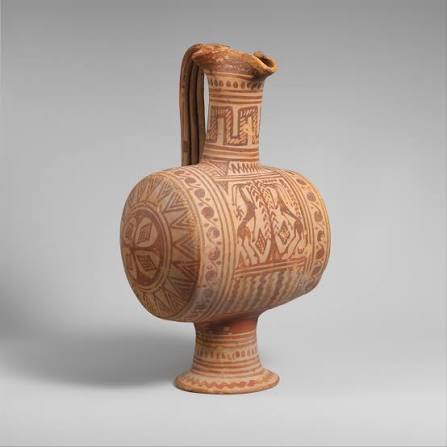
Barrel-Shaped Oinochoe (Jug)
Visual
Made of terracotta
Depicts a motif of two goats flanking a tree
Figures are surrounded by geometric patterns
Iconographic
A pouring vessel
Heavily influenced by Greek geometric pottery
Motif was originally from the Near Eastern period and a symbol of life-giving forces
Jug often found with bird-shaped askos
Probably a connection between he two vessels and wine rituals
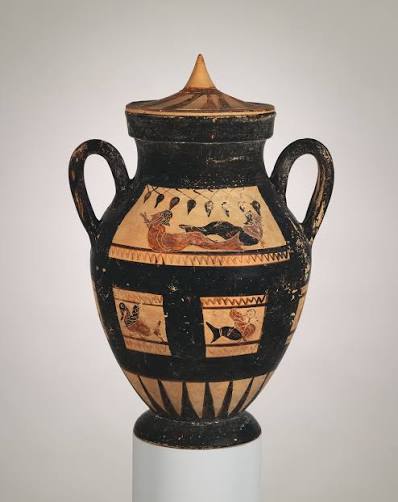
Amphora with Lid
Visual
Made of terracotta
Naturalistic/abstract figures in red and black
Front top panel depicts two mermen
Front bottom panels depict birds
Back panel depicts two dogs in active poses, ready to fight
Iconographic
Uses black figure technique
Shows contrast between black figures and a red background
Shows on real narrative, so theme is unknown
Probably functioned as a storage vessel

Bucchero
Visual
Made of terracotta
Figures are naturalistic
Depicts two deer and a bird in the middle
Iconographic
Used as elite tableware, showing their high status
Black color by being fired in reduced atmosphere, restricting oxygen
Often burnished to create a high, metallic sheen
Many had incised inscriptions
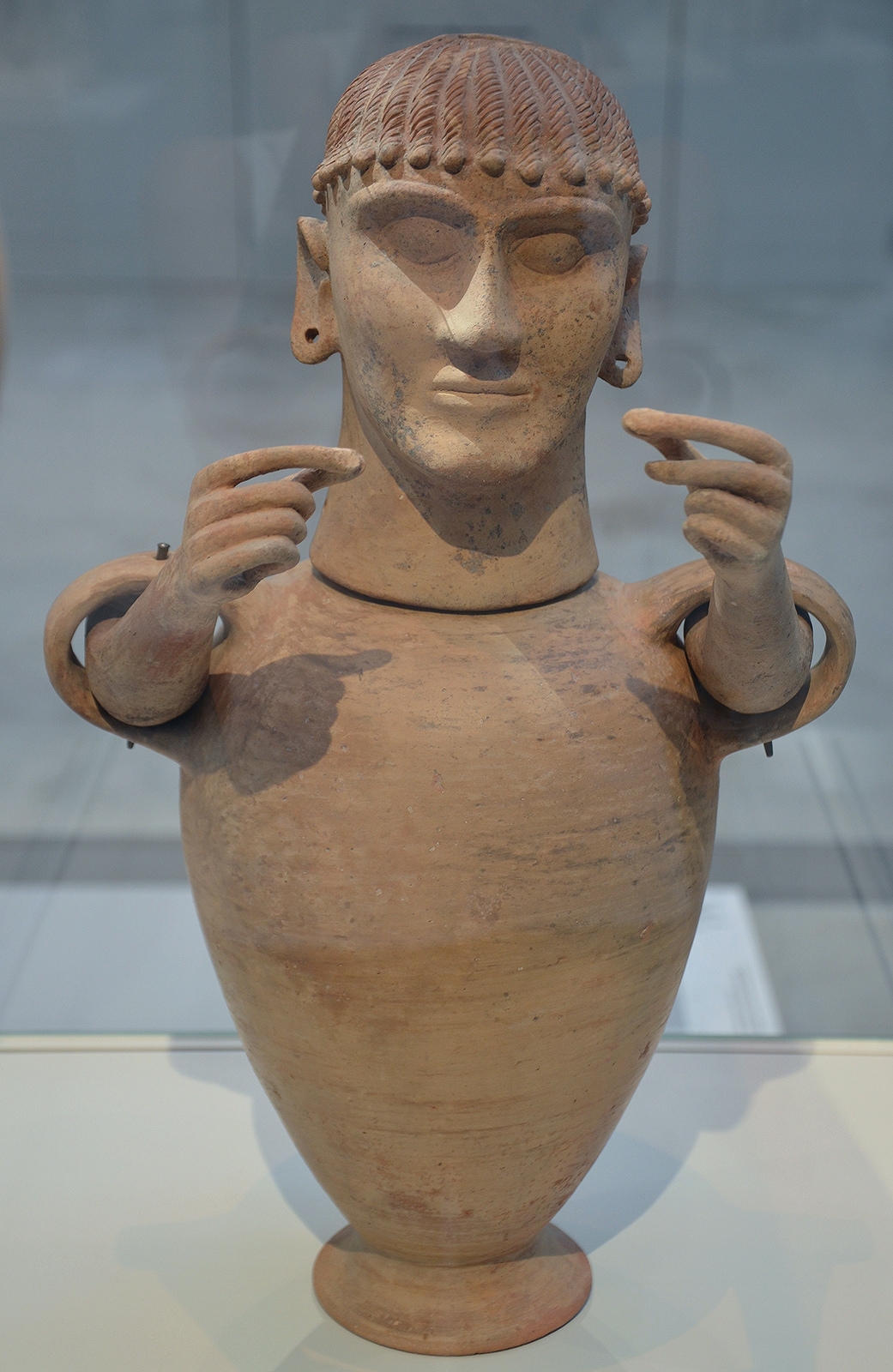
Canopic Urn
Visual
Made of terracotta
Lid has a head, facial features, and hands sticking out of the handles (anthropomorphic)
Iconographic
Likely influenced by Egyptian canopic urns
Were found in pit burials
Were used to store food for the dead to eat in the afterlife
Also stored ashes of the deceased

Temple of Minerva
Visual
Made of wood, mudbrick, and terracotta
Iconographic
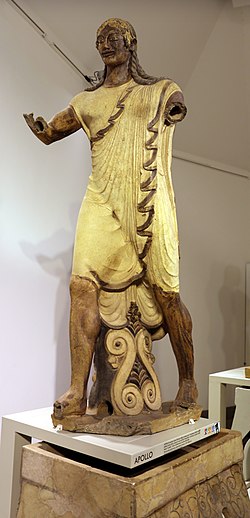
Apollo
Visual
Painted terracotta
Lifesized with an archaic smile, stylized garment, and naturalistically forward stride
Lost arms, but we know they were reaching out
Iconographic
Was once brightly painted
Garment is a precursor to the Roman toga
Was an acroterian, as it was on top of the temple of Minerva
Made by master sculptor Vulca

Hut Urn
Visual
Made of impasto: unrefined clay
Depicts oval-shaped house with a timbered roof
Iconographic
Deceased Etruscans were cremated instead of buried
Their ashes were put into huts for the afterlife
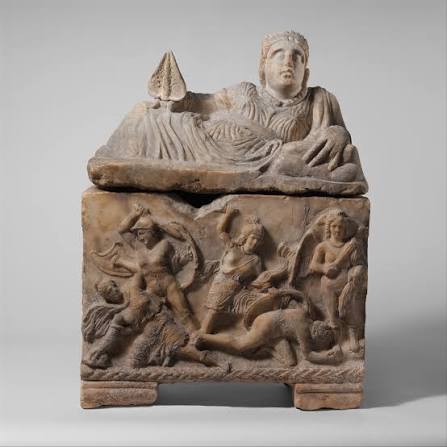
Cinerary Urn
Visual
Made of alabaster
Depicts woman on top with a torque, necklace, and holding a fan
Frieze at the bottom depicts 4 Greeks fighting Amazons, who’re warrior woman
Vanth is depicted on the right, watching
Iconographic
Vanth is an Etruscan goddess that would guide deceased souls through their journey to the afterlife
Excavated by Heinrich Schielmann, so Amazons were possibly real
Was originally painted, as there’s bits of paint still on the urn
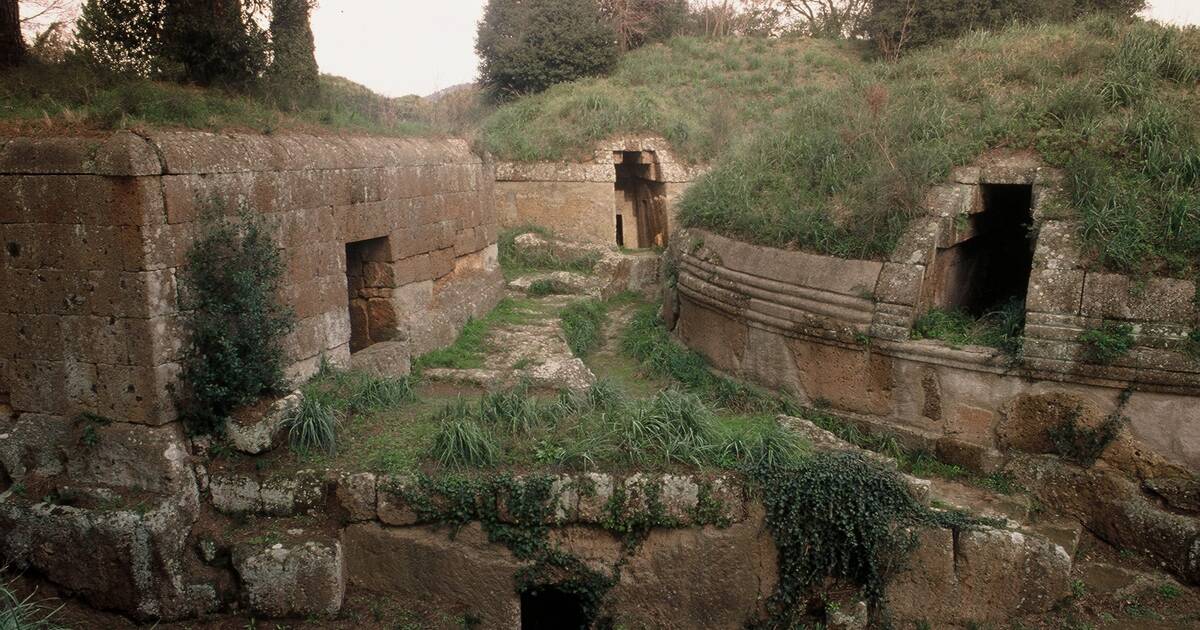
Cerveteri & Tarquinia Necropolises
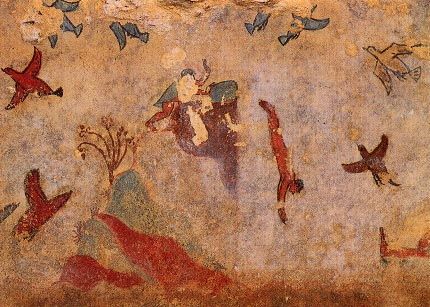
Boys Climbing Rocks & Diving (look at SH)
Visual
Iconographic
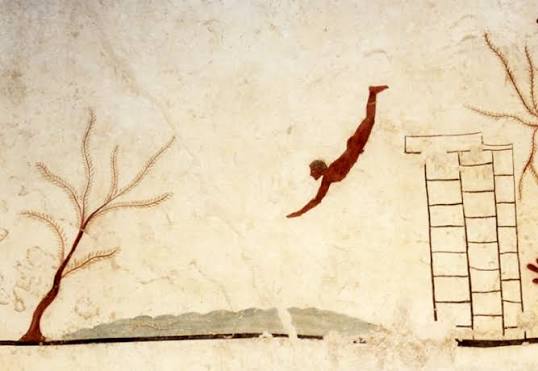
Youth Diving (look at smart history for more info on it)

Dancers and Diners
Visual
Buon fresco painting
Depicts naturalistic, flat figures dancing to musical instruments, like lyres, in active poses
Depicts couples (diners) watching them as a form of entertainment
Top and bottom frieze depicts geometric shapes
Textiles clothing depicted several patterns
Faces are different per person, giving a sense of individualism
Iconographic
Found in tomb of Cerveteri
Joyful celebration is a symbol of Etruscan belief in a cheerful afterlife

Sarcophagus of the Spouses
Visual
Iconographic

Married Couple
Visual
Made of marble
Depicts naturalistic and idealistic reclining figures
Intimate moment of a warm embrace as figures look at each other
Iconographic
Influenced by High Classical Greek Marbles
Found in Cerveteri necropolis
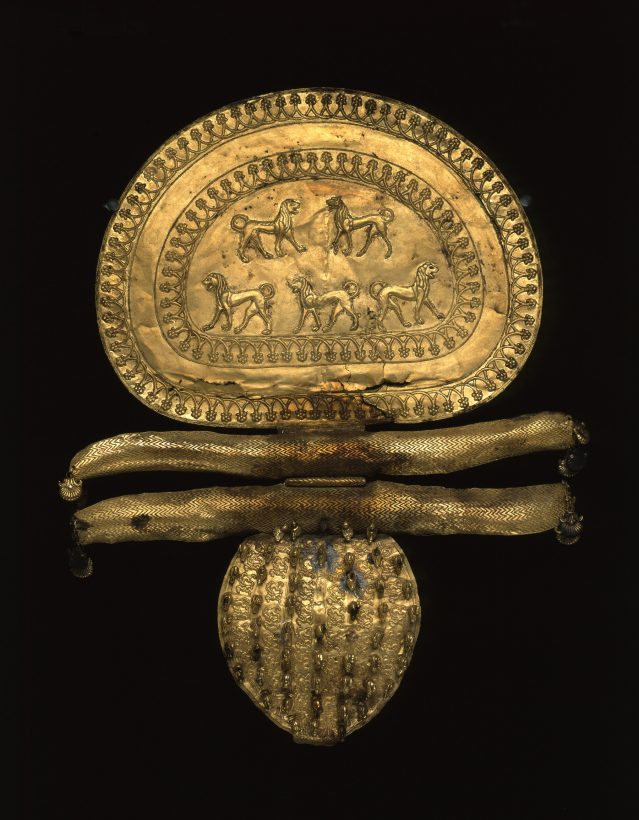
Large Parade Fibula

Chimera
Visual
Made of bronze
Depicts a chimera: a fire-breathing female creature
Lion head & body, a goat rising from its back, and a tail ending with the head of a snake
Active pose shows fierce nature
Is freestanding
Inscription on right leg: “offering belonging to Tinia”
Iconographic
Was a votive dedicated to the sky god Tinia
Shows how advanced bronze sculptures were compared to others
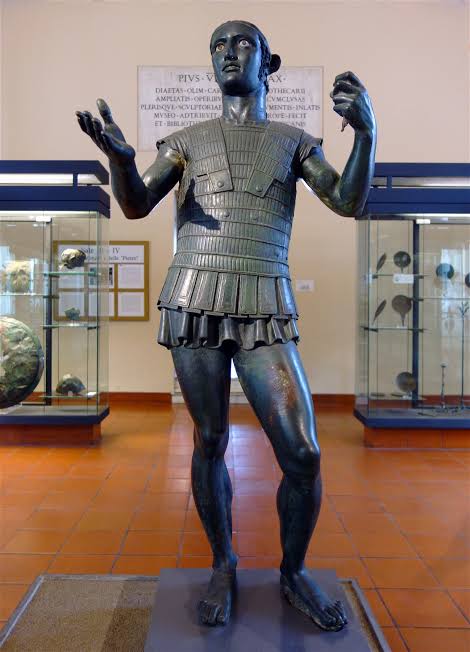
Mars of Todi
Visual
Made of bronze
Depicts youthful warrior in dynamic pose
Is in an altered contrapposto stance
Inscription: “Ahal Trutitis gave gift”
Iconographic
Uses lost-wax casting method
Found on Mount Sanitas near Todi, Italy
Another votive, probably dedicated to Laran the Etruscan god of war
Originally had libation bowl and spear in hands
Probably had a helmet on head